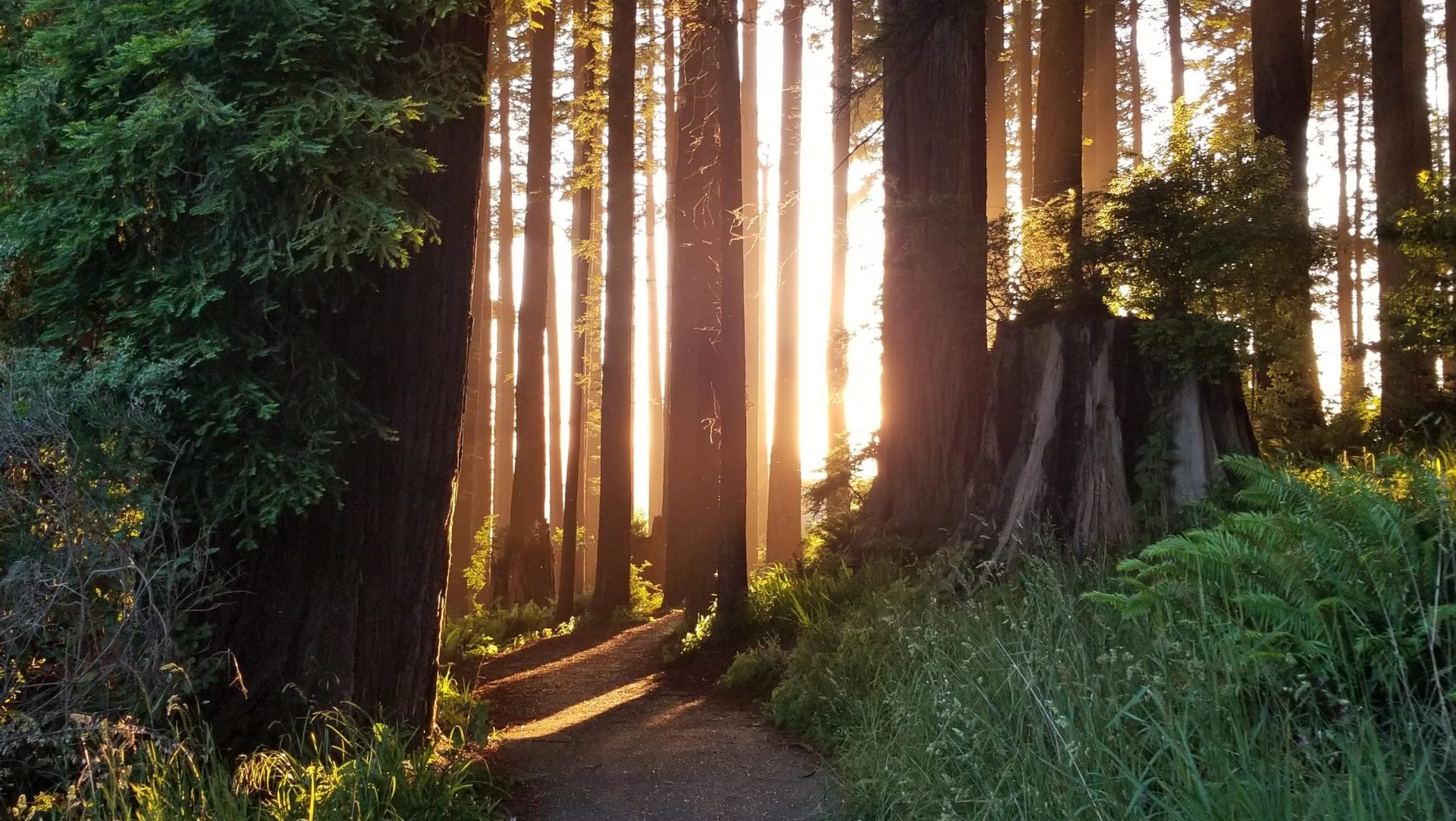Unrealized Potential In Aligning Our Communities
Transcending Individualism
Once you have achieved agency over your personal reality and internal universe, you are then able to expand outward and interconnect with those around you. Emerging from a self imposed isolation can be a daunting task to undertake, but it is a necessary one in order to expand what we are capable of achieving in life. Being grounded within your own being allows you to engage in authentic relationships with other humans without becoming lost in their worlds.
Learning to analyze the behaviors of others and recognizing patterns takes time and experience, but it is a skill that will allow you to efficiently navigate through humanity once mastered. You must be able to confidently decide to take measured steps toward or away from individuals based on every bit of information that you acquire about them over the course of your interactions (Canevello, 2010). Forming these connections is similar to the way in which atoms associate with one another while constructing physical matter.
By distinguishing which individuals you react favorably to and have compatible and complementary interactions with, you can form strong bonds that are difficult to break. Attempting to forge relationships, whether platonic or romantic, with incompatible individuals creates unstable bonds that can be disintegrated with the application of little pressure. Weak bonds construct weak communities that are fated for ruin. Just as it takes many cells to configure your physical form, it takes the collective effort of many individuals to construct the communities that we reside in.
In the history of social studies and sciences, there has been much deliberation over whether individualism or collectivism should be prioritized in society. In reality, both concepts are of equal value as the collective is limited by the individual just as the individual is limited by the collective (Jiang, 2022). Working to determine the balance between meeting the needs of the individual and the collective is an attainable goal that lies in a closer connection with the natural world and developing a sense of empathy for one another.
Acknowledging Each Other
In the mechanisms of the universe and Earth, we are all composed of the same atomic particles, and fundamentally no person is cosmically greater than any other person as we are all one. Colonial institutions and ideologies have long waged a continuous global conflict in order to coerce humanity into mental and physical triangulation since the age of the Roman Empire and beyond. By continually imposing hostile divisions between people, the human communities of Earth have been unable to improve or amend the relationships needed to free themselves from destructive rulership and systems (Miles, 1990).
We have become long mentally entrapped in the belief that in order to secure our individual existence, we must exert power and control over the lives and decisions of others. Even if the lifestyles of other humans pose no harm to the general community, they are pathologically viewed as a threat. By focusing on shifting this unnecessary competition into cooperative efforts within our local communities, we can begin to alter the course of the way we relate to one another to a more indigenous framework.
This framework has the potential to create wider access to resources and opportunities without forfeiting quality of life. The foundation of building a healthy community is understanding that all individuals are naturally deserving of resources, safety, shelter, and life. Developing the mindset that abundance is all around us in Mother Earth is the solution to enmity among humans. In and of itself, the meaning of acknowledgement is to recognize and have awareness of the existence or truth of something.
To acknowledge other people, you first need to nurture a general sense of compassion for those outside of yourself. Recognizing the legitimacy of the lives and needs of others takes externally applied insight derived from your own experiences as a living being (Chung, 2021). We must be able to hear the concerns and thoughts of others with the intention of understanding their needs and not to react out of fear for one’s own survival.
Circulating Skills and Knowledge
No two individuals are exactly alike and we each have unique strengths and weaknesses that contribute to the overall performance of our societies. Just as within our physical forms, we are composed of many different types of cells that make it possible for us to be functional organisms. Our bodies would not be able to operate if there was only muscle tissue with no bone structure to attach and uphold it. If we learn to reflect the structure of our communities to the natural structure of life then we could manifest a highly functional communal body.
The covert limitations on the access to opportunities to gain knowledge, experience, and skill sets is ultimately a detriment to society as a whole (Fibbi, 2021). How can we collectively evolve if there are intentionally imposed roadblocks placed on those that are considered unworthy based on discriminatory pathologies? It would be ridiculous if our bodies refused to generate necessary cell types due to delusional prejudiced ideas about them. For instance, women in societies across the Earth have been systematically disenfranchised for the purpose of maintaining the structure of patriarchy.
Despite the fact that the mother is the first instructor of children and has the highest impact on them in their earliest development, there is no importance placed on the mental enrichment or development of women. We as human beings inhibit our own evolution by maintaining unnatural stress on minds and spirits of women from whom we are all born from. Contributing to the evolution of women is directly correlated to the evolution of all of humanity (Folger, 2017). Education does not simply begin and end within primary schools, secondary education, or even higher learning institutions.
Learning is a continuous process in life that begins when we are born and ends with our final breath. The lack of importance placed on learning outside of facilities is a byproduct of capitalism as it does not result in the generation of labor but highlights personal development and community enrichment. Releasing the egotistical desire to dominate others based on false perceptions of worthiness has the potential to springboard communities forward into a future that we would currently consider to be a work of science fiction.
Sharing Resources
Evolving from the mentality of lack and survival would result in our realization that we do not need to hoard resources that we are not even capable of consuming or utilizing in a sustainable manner. Through the propagation of intergenerational greed and disdain for one another, many would rather allow viable resources to rot and be destroyed than allocated to those who would benefit from them. In the US alone, approximately 80 billion pounds of food goes to waste every single year, the highest amount for a country in the world.
Grocery corporations frequently mandate their employees to destroy edible food items due to miscellaneous limitations on the inability to sell products. Farmers often refrain from harvesting or are unable to sell crops due to cosmetic concerns or limitations of time before crops are no longer harvestable. Rather than being based on the local populations or demand for products that customers actually consume, food is mass produced and then mass wasted (Hickey, 2014). Afterwhich, decomposing food further contributes to methane production in our atmosphere, worsening the issues that we face with our climate.
Our food distribution systems alone are inefficient at best and destructive at worst (Singh, 2022). Despite popular belief, capitalism in itself is not the sole culprit of the socioeconomic disparities seen in our communities, but the prevailing desire for power over other humans even in the face of the harm that it causes to humanity as a whole as well as to the environment. A prominent tenet of colonialism is to radiate practices of human and environmental subjugation across the globe in an effort to dominate Earth and strip her of her many natural resources. In an effort to exert control over people living close to nature, colonial forces have intentionally wrought destruction upon the ecosystems from which people have relied on for centuries if not thousands of years (Whyte, 2018).
Distributing unused resources would decrease violence based in need and desperation. When people over accumulate resources, a sense of heightened defensiveness can occur from the perception of having to defend one’s possessions, so even violence stemming from those with an overabundance of unused resources will decrease. A framework of more equitable distribution of resources has the potential to create more harmonious communities without forfeiting anyone’s quality of life.
Solutions Over Avoidance
Being the humans that we are living in the modern era, there are many challenges that we face meeting the needs of individuals in communal spaces. Each of us has varying levels of skills, knowledge, neurological and social challenges, and physical abilities. Sweeping these variabilities beneath a proverbial rug not only disregards personhood but puts the collective under a covert strain by silently implementing an unrealistic standard of being.
Making sure to take care of each other does not negatively impact our personal lives, but allows us to fully enjoy the presence of one another in the relative absence of the stress of presumptions and accessibility. Every person has gifts that can uplift their community beyond our narrow view of social expectations based on the generation of a labor force that primarily benefits corporations. The more we relax our stringent expectations, the more we can all be allowed the physical and social space to embrace and exist as our true selves and live more peaceful lives.
We also all come from a beautiful variety of backgrounds, cultures, and ethnicities that should be acknowledged and accounted for. Disregarding this aspect of the lives of individuals in favor of alleged colorblindness or uniformity within communities not only has dehumanizing sentiments but also neglects the natural diversity of humanity. It is not necessary for all of us to intricately comprehend one another on every facet in order to coexist.
In the natural world, entirely different species live in close proximity within the environments that they thrive in as every species plays a crucial part in the maintenance of their ecosystem. If tree squirrels and songbirds don’t need to fully understand one another to share space, then neither do two beings of the same species with the same general needs. The aversion to hearing another person speak a different language or seeing someone with a higher concentration of melanin than yourself is purely psychological and bears no detriment to your reality. Different people come with different skills and perspectives that only broaden the capacity of your local community and environment.
Communal Accountability
As we live our lives in proximity to one another, disputes, disagreements, and violence are inevitably bound to occur among individuals. A crucial concern that must be taken into consideration in how we are able to harmonize communally, is the matter of addressing accountability in one another’s actions. Implementing efforts in community justice has the profound benefits of not only preventing people that commit nonviolent infractions from being incarcerated in jails and prisons, but also gives attention to the details of individual circumstances.
The current criminal justice system is rampant with negligence, discrimination, maltreatment, and exploitation of human beings, especially those of melanated complexions. The traditional system that we have been subject to is focused largely on punishment with little support for those affected. Along with this, there is little effort put into determining the cause of the offense occurring in the first place and leaves ample potential for the offender to reoffend.
For those who have suffered by the actions of others, it can be an arduous process to receive acknowledgement and compensation for their ordeals. Law officers often operate through clouded perceptions of reality that greatly hinders their ability to make neutral judgements that will affect the lives of people seeking justice (Hetey, 2018). This system has long been exposed for its corrupt nature and it is necessary for us to embrace alternate forms of action against offenses within our communities.
Restorative justice is a practice of community based accountability that focuses on understanding, rehabilitation, and reconciliation. Undertaking the process of restorative justice generally occurs in three stages (Gumz, 2009). The first stage is “encounter”, in which the affected and offending individuals agree to meet in a safe location that is facilitated by trained community members for mediation. The individuals involved discuss the incident that occurred with a focus on open transparency and vulnerability.
This gives the opportunities for the offender to acknowledge responsibility for their actions and the victim to be heard directly and express their needs in moving forward. The second stage is “repair”, in which the obligations owed to the victim are determined for their healing and for the offender to take positive action for their atonement. The third stage is “transform”, in which the basis of the offense is examined in order to ideally reform the offender and prevent recurrences of the harmful behavior.
This practice has been shown to provide closure and contentment for those who have been victimized, giving them space to discuss their feelings and how their lives have been impacted. It also gives space to offenders to divulge the root of their offenses and find alternate solutions for their behaviors that result in lower chances of reoffending (Pavlacic, 2021).
Combined Creativity
Expanding our mentalities surrounding the structure and functionality of our communities opens the gates to endless possibilities. We have the ability to form and shape the world around us in ways that are either beneficial or detrimental. We are truly the actors of our collective stage play and can alter the script that we follow and change our roles as we see fit. To access our own abilities, we must begin to incorporate our thought processes and philosophies with the characteristics associated with both sides of the human brain.
Patriarchal social structures rely disproportionately on the traits associated with the left half of our brain while largely disregarding the traits associated with our right half. The left hemisphere of your brain regulates the motor function of the right side of your body and primarily moderates communication and analytical processes. The right hemisphere of your brain regulates the motor function of the left side of your body and primarily moderates emotional and creative processes. However, each side relies on the other in order to operate at full capacity, they do not function independently from each other (Corballis, 2014).
Creativity, emotional expression, and imagination are necessary elements to cultivate a healthy and sustainable community. These natural aspects of humanity magnify our ability to mentally evolve at a more rapid pace as well as establish innovative solutions to common social plights (Moran, 2010). Many common prejudices and systemic injustices could be readily resolved by embracing the full range of human expression.
The harmful attitudes that people choose to intergenerationally maintain toward race, sex, gender identity, social status, and any other discrepancy to the dominant model individual will only succeed in the ongoing entrapment of humanity in communal deterioration. Maintaining a society based primarily in robotic logic and animalistic competitiveness has resulted in the closed minded, apathetic, and oppressive cultures that we currently face in the world. Strict control over people requires the dampening of the human spirit as the spirit is expansive beyond the uniformity of social regulations.
Soaring Together
The future of humanity relies on the collective choices that we make about ourselves and each other today. As social organisms, our communities are imperative to not only our safety and survival, but also for our physical and mental wellbeing. Remaining willfully unconscious about the disparities that exist all around us blinds us to the path of ruin that we heedlessly march along.
By fostering unity and creativity between groups of individuals we have the power to imagine an Earth and human friendly future reality. Fear is a crippling obstacle between us and the limitless potential that lies dormant within us if we would only allow ourselves to take hold of it. When we choose individualism and tyrannical systems we choose destruction and despair for ourselves and for our Mother Earth. Breaking loose from the cycles that we have found ourselves in over the course of generations is a difficult but achievable undertaking.
Life is ours to shape to our desire.
References
- Canevello, A., & Crocker, J. (2010). Creating good relationships: Responsiveness, relationship quality, and interpersonal goals. Journal of Personality and Social Psychology, 99(1), 78–106. https://doi.org/10.1037/a0018186
- Jiang, S., Wei, Q., & Zhang, L. (2022). Individualism versus collectivism and the Early-Stage transmission of COVID-19. Social Indicators Research, 164(2), 791–821. https://doi.org/10.1007/s11205-022-02972-z
- Miles, G. B. (1990). Roman and Modern Imperialism: A Reassessment. Comparative Studies in Society and History, 32(4), 629–659. https://doi.org/10.1017/s0010417500016686
- Chung, Y. W., Im, S., & 김정. (2021). Can empathy help individuals and society? through the lens of volunteering and mental health. Healthcare, 9(11), 1406. https://doi.org/10.3390/healthcare9111406
- Fibbi, R., Midtbøen, A. H., & Simon, P. (2021). Consequences of and responses to discrimination. In IMISCOE research series (pp. 65–78). https://doi.org/10.1007/978-3-030-67281-2_6
- Folger, A. T., Putnam, K., Putnam, F. W., Peugh, J., Eismann, E. A., Sa, T., Shapiro, R. A., Van Ginkel, J. B., & Ammerman, R. T. (2017). Maternal Interpersonal Trauma and Child Social-Emotional Development: an Intergenerational effect. Paediatric and Perinatal Epidemiology, 31(2), 99–107. https://doi.org/10.1111/ppe.12341
- Hickey, M. E., & Ozbay, G. (2014). Food waste in the United States: A contributing factor toward environmental instability. Frontiers in Environmental Science, 2. https://doi.org/10.3389/fenvs.2014.00051
- Singh, A., Singhania, R. R., Soam, S., Chen, C., Haldar, D., Varjani, S., Chang, J., Dong, C., & Patel, A. K. (2022). Production of bioethanol from food waste: Status and perspectives. Bioresource Technology, 360, 127651. https://doi.org/10.1016/j.biortech.2022.127651
- Whyte, K. P. (2018). Settler colonialism, ecology, and environmental injustice. Environment and Society, 9(1), 125–144. https://doi.org/10.3167/ares.2018.090109
- Hetey, R. C., & Eberhardt, J. L. (2018). The numbers don’t speak for themselves: racial disparities and the persistence of inequality in the criminal justice system. Current Directions in Psychological Science, 27(3), 183–187. https://doi.org/10.1177/0963721418763931
- Gumz, E. J., & Grant, C. (2009). Restorative Justice: A Systematic review of the social work literature. Families in society-The Journal of Contemporary Social Services, 90(1), 119–126. https://doi.org/10.1606/1044-3894.3853
- Pavlacic, J. M., Kellum, K. K., & Schulenberg, S. E. (2021). Advocating for the Use of Restorative Justice Practices: Examining the Overlap between Restorative Justice and Behavior Analysis. Behavior Analysis in Practice, 15(4), 1237–1246. https://doi.org/10.1007/s40617-021-00632-1
- Corballis, M. C. (2014). Left brain, right brain: Facts and fantasies. PLOS Biology, 12(1), e1001767. https://doi.org/10.1371/journal.pbio.1001767
- Moran, S. (2010). The roles of creativity in society. In Cambridge University Press eBooks (pp. 74–90). https://doi.org/10.1017/cbo9780511763205.006






